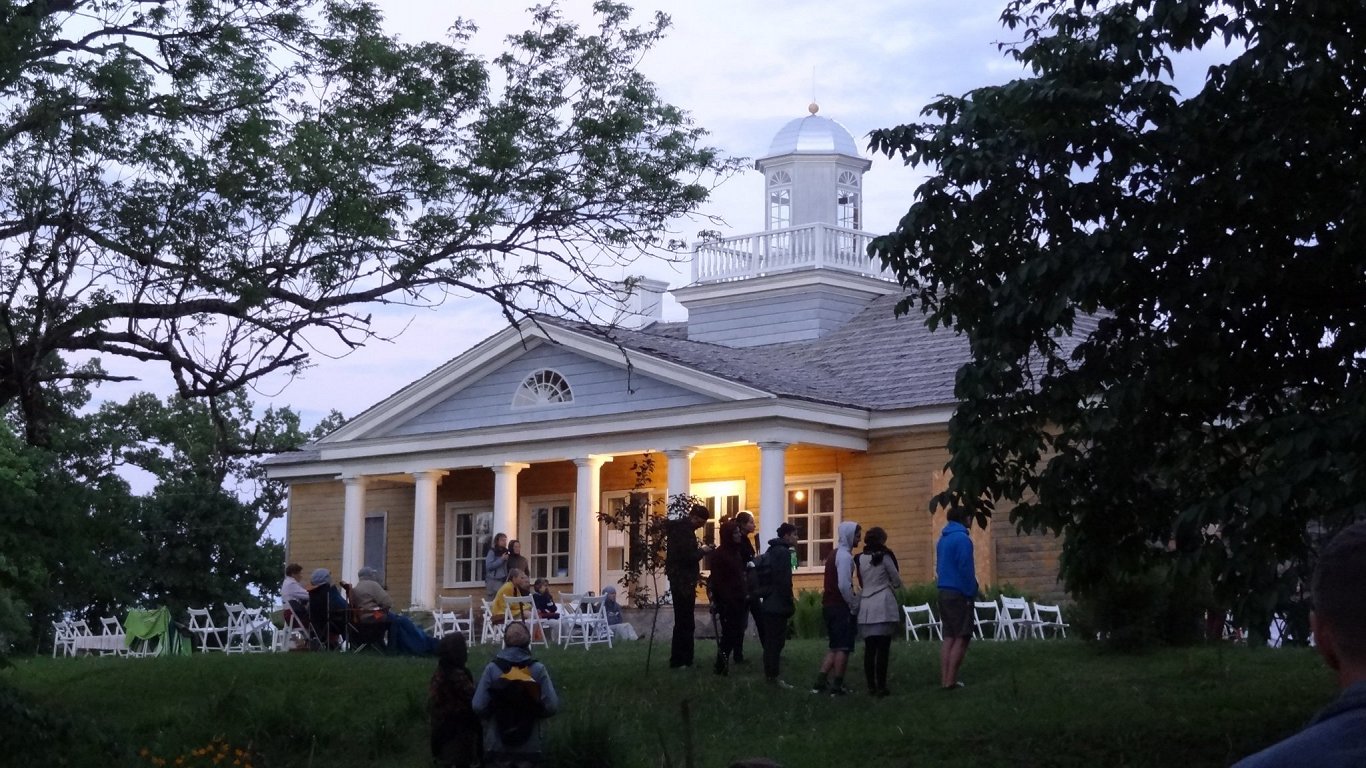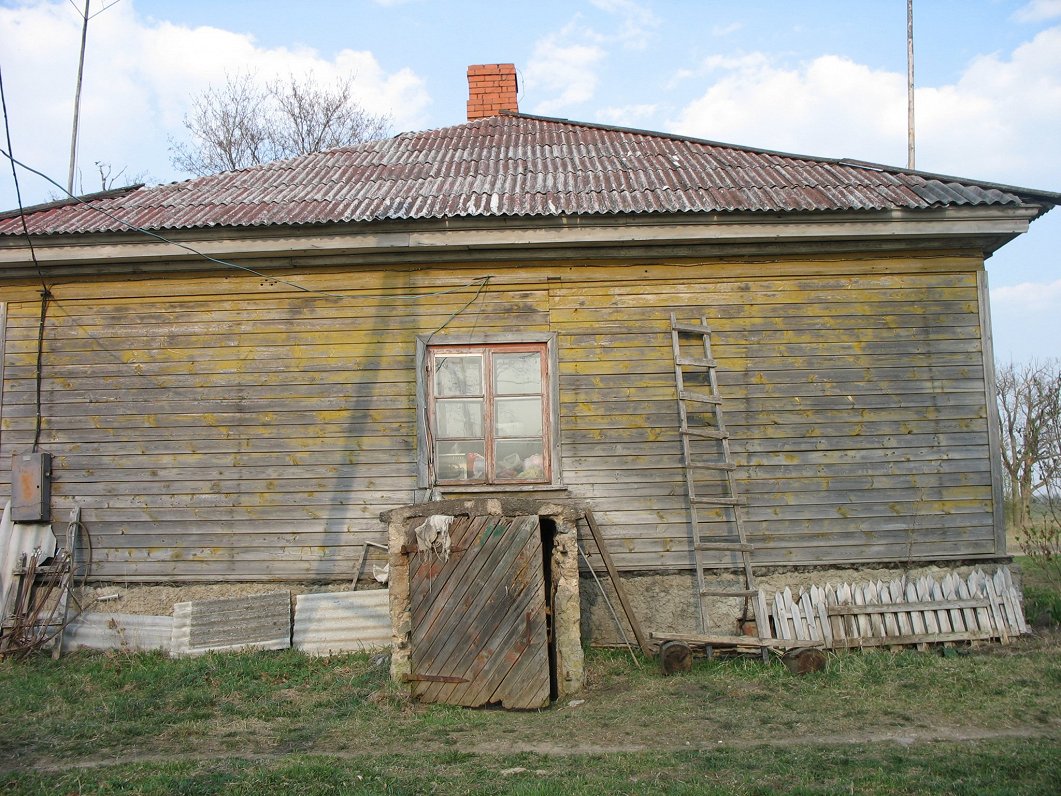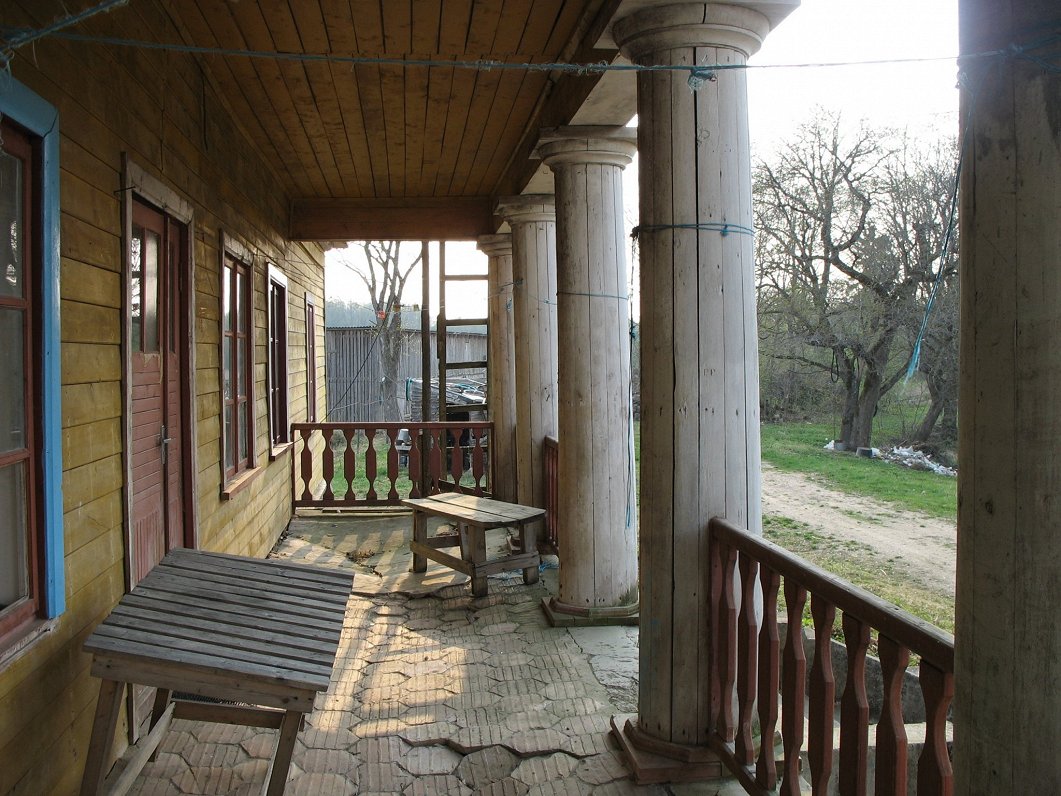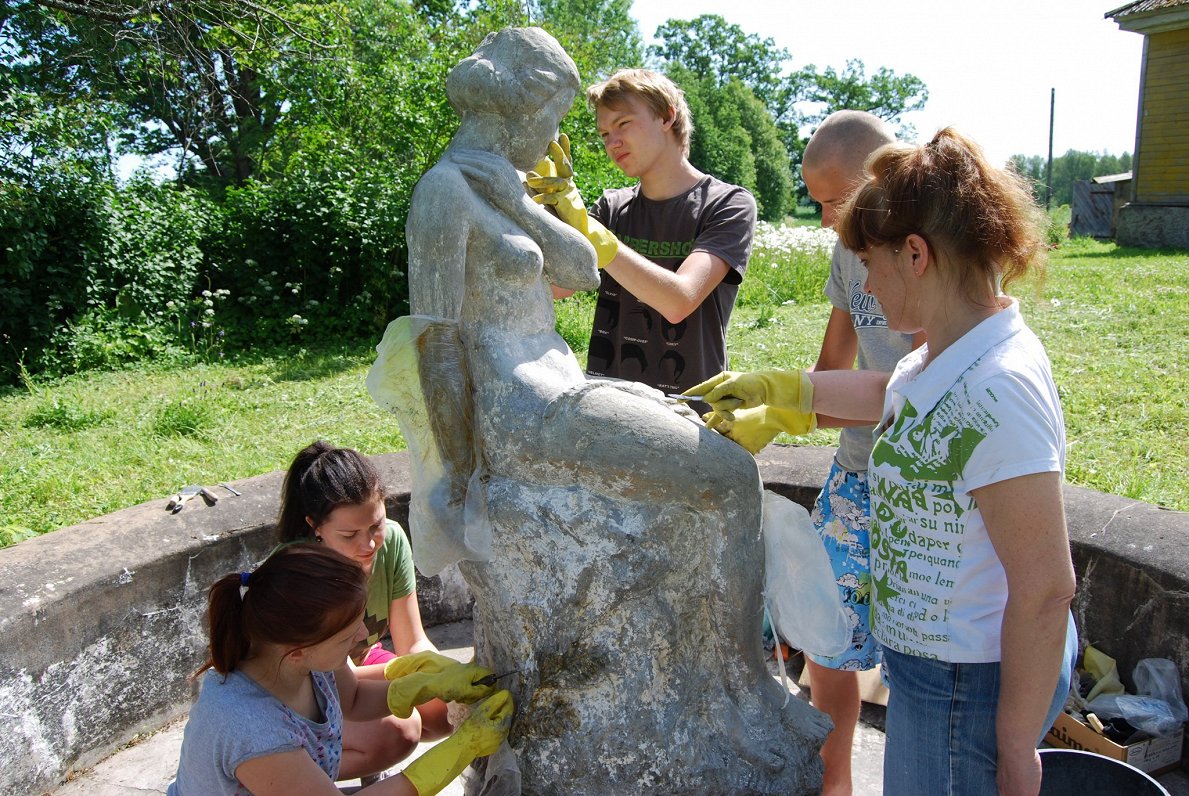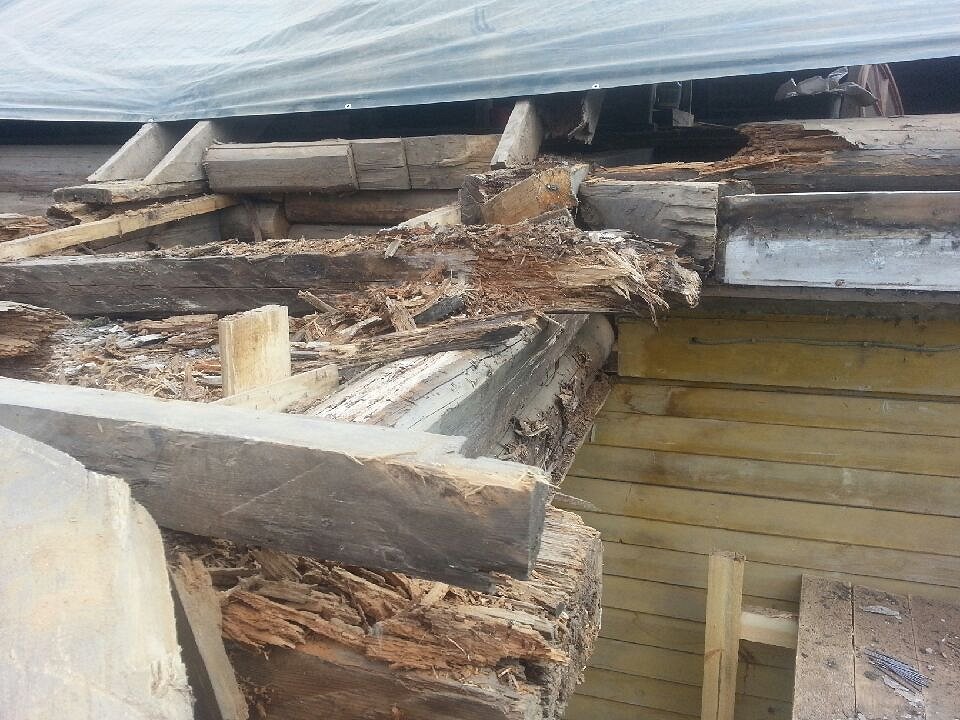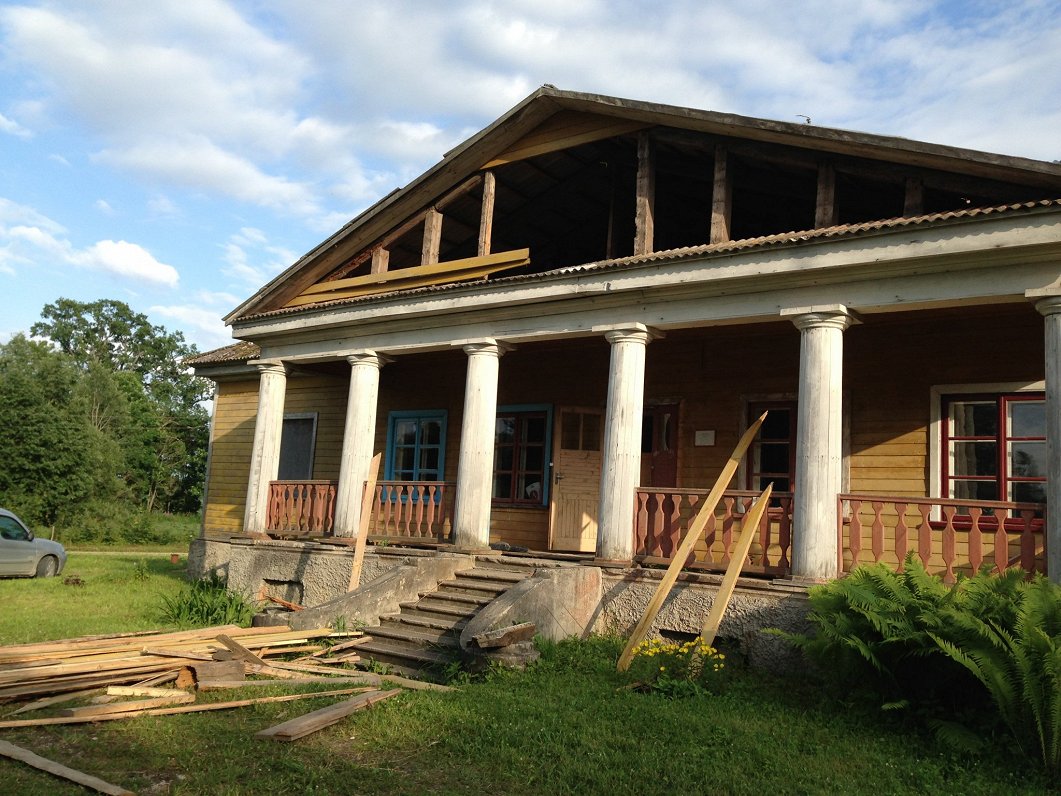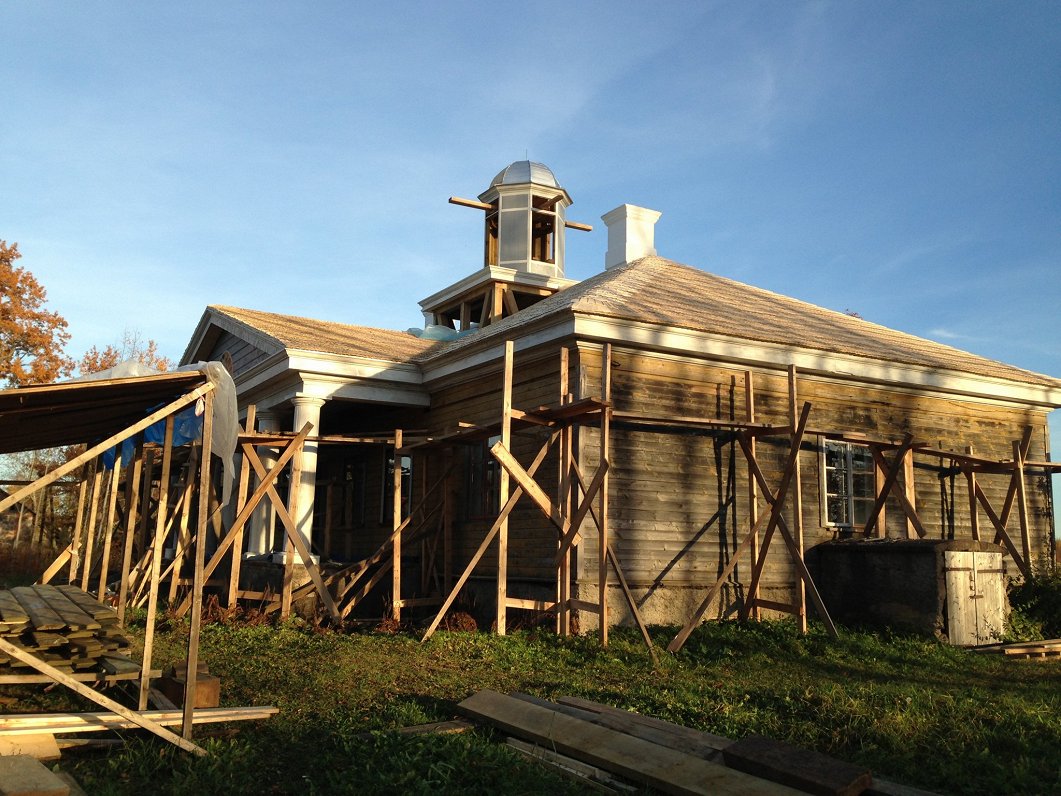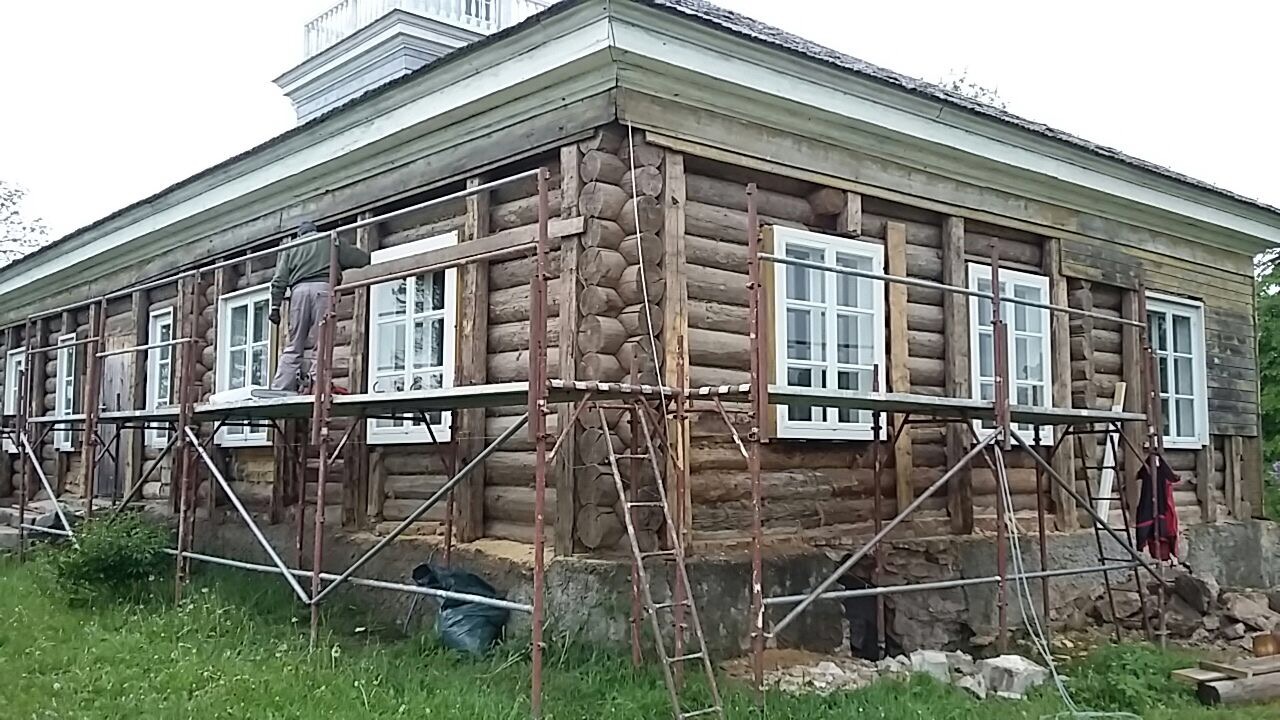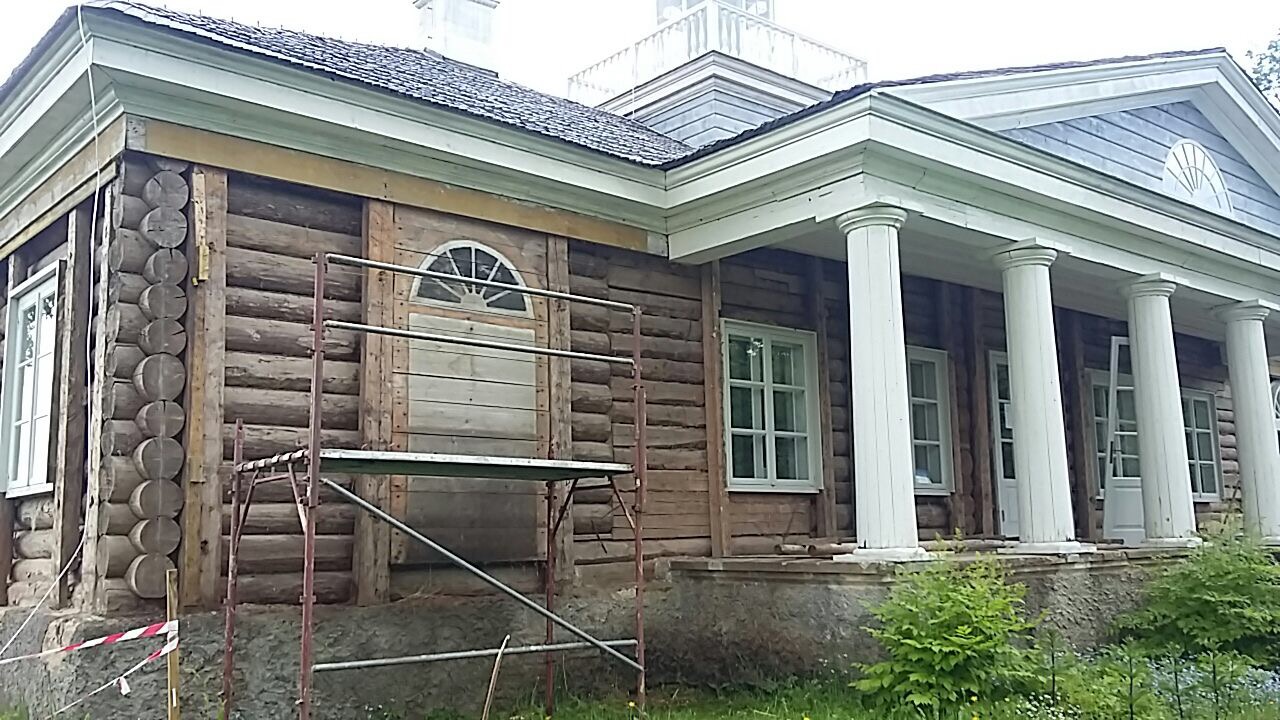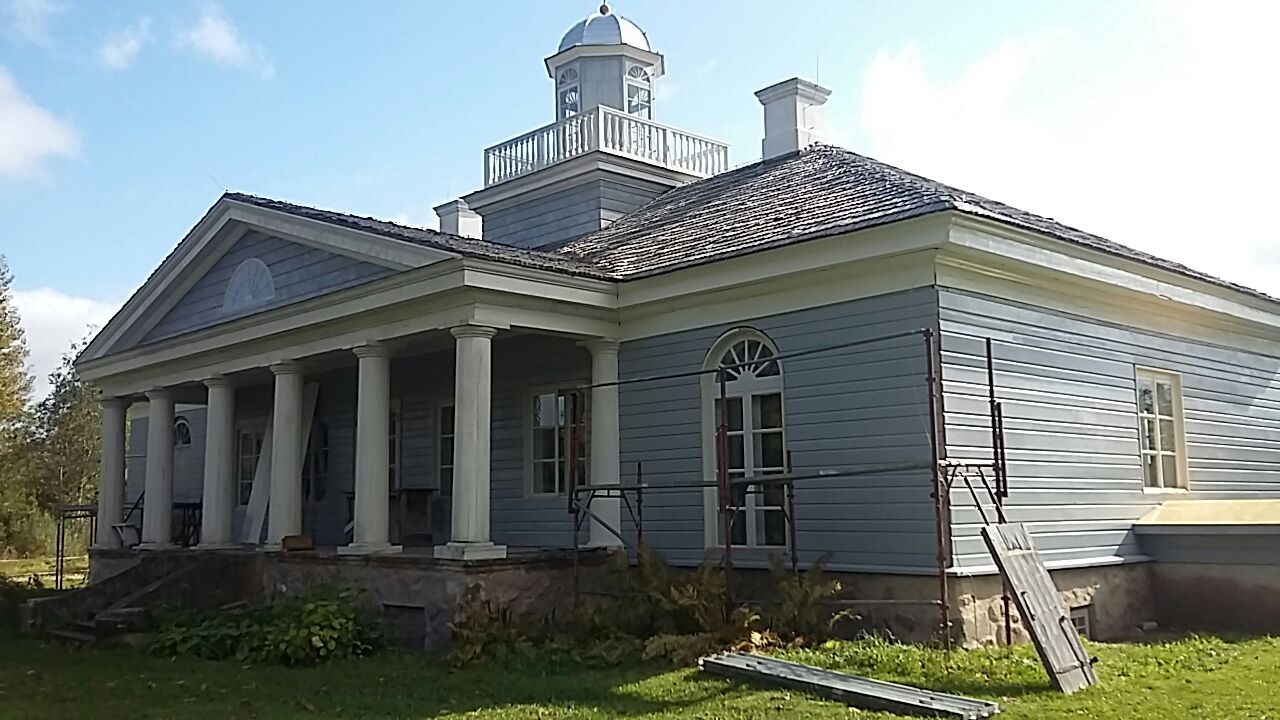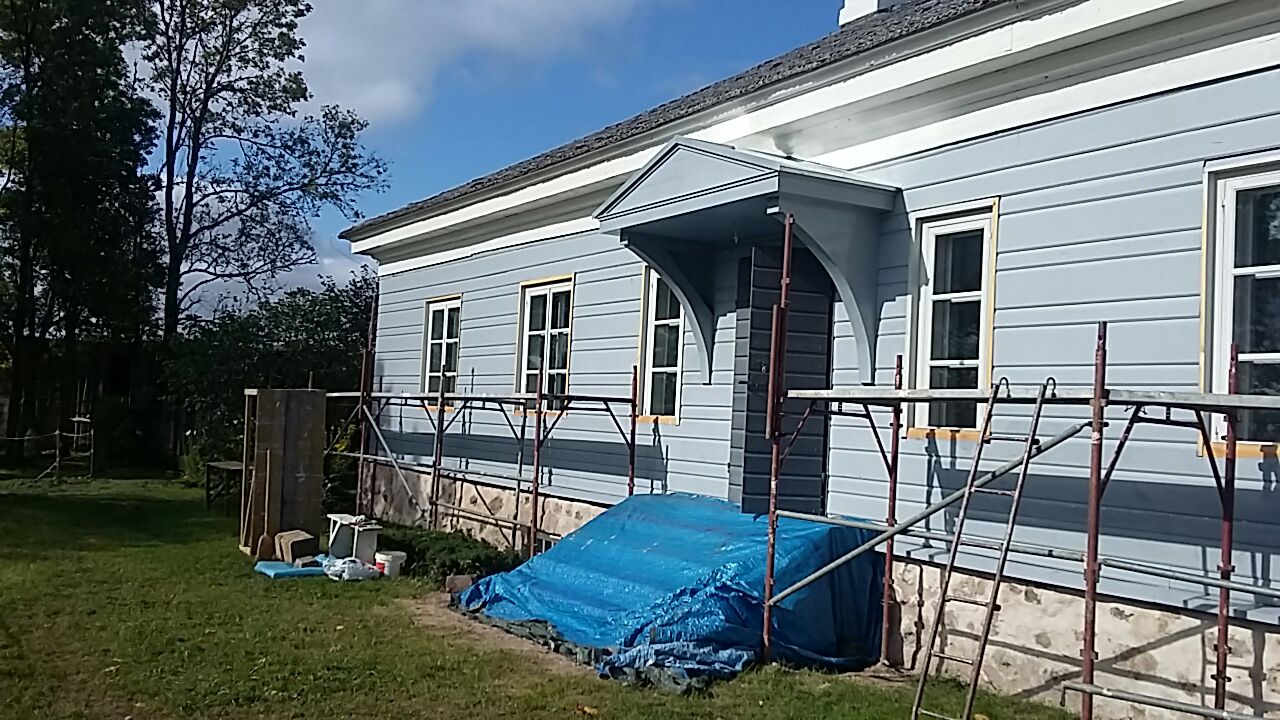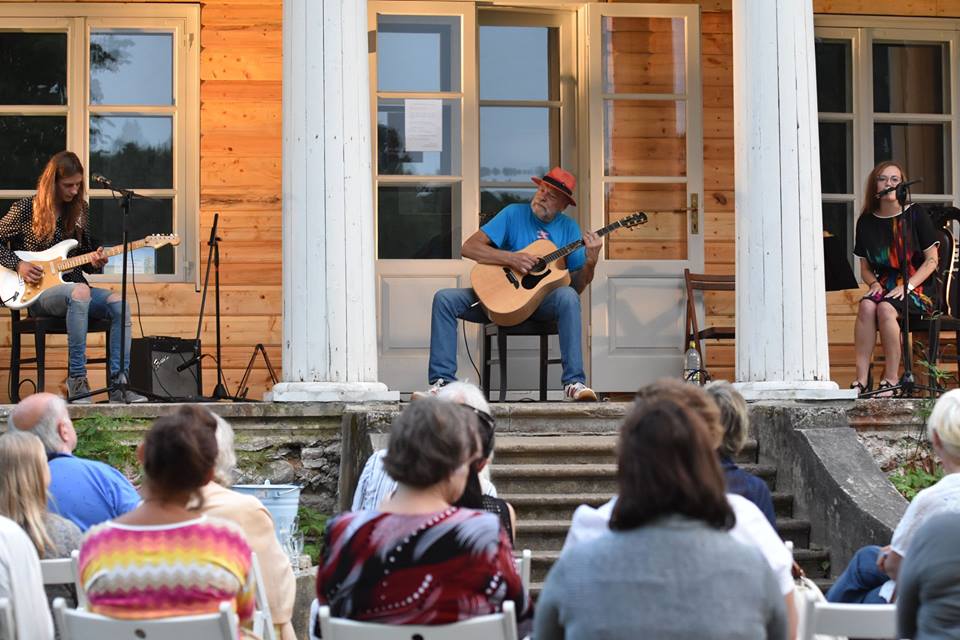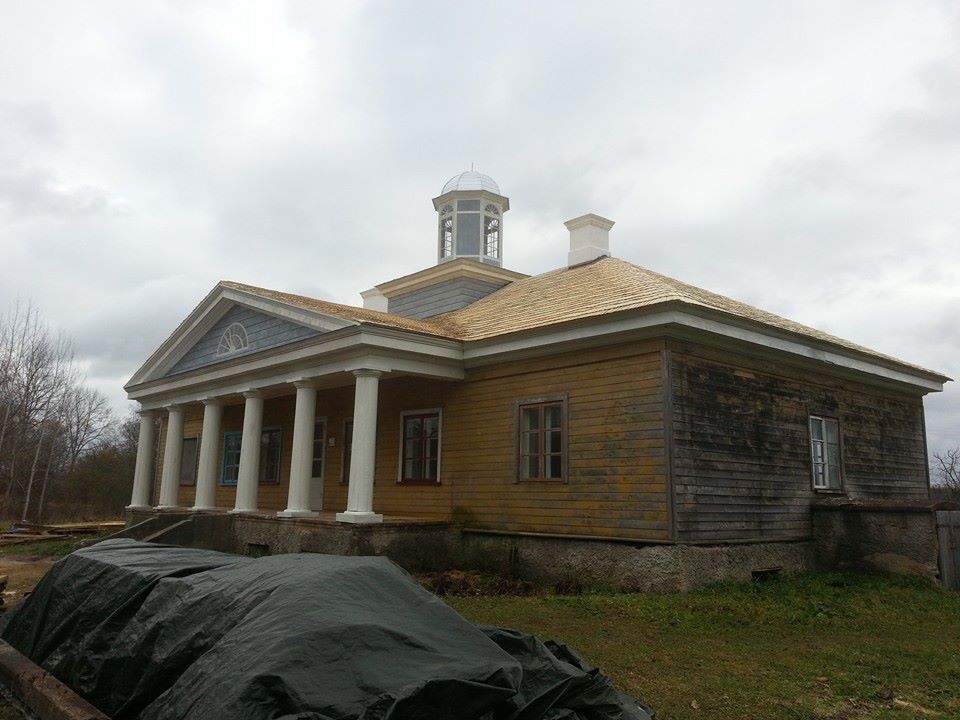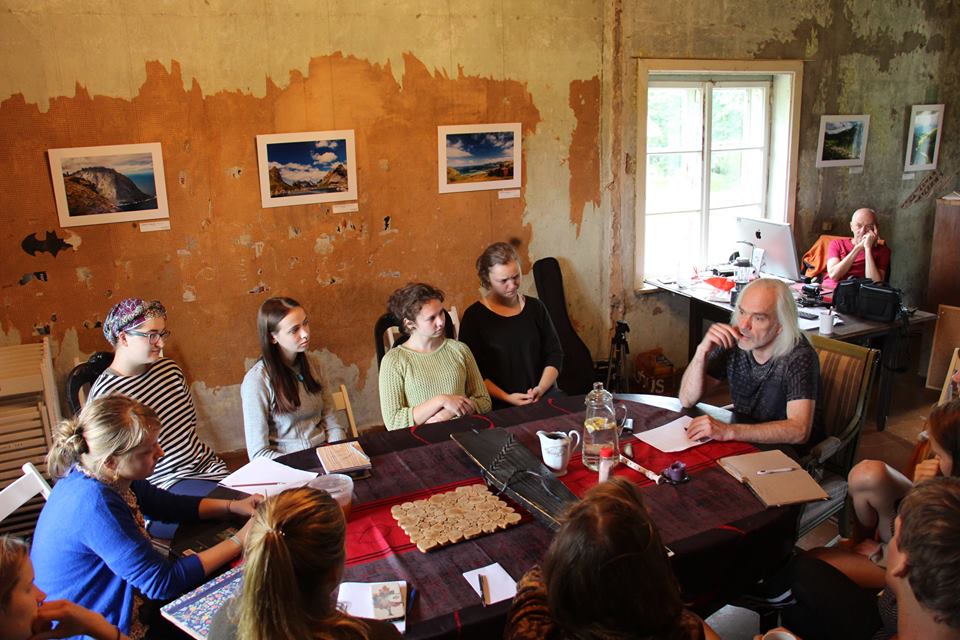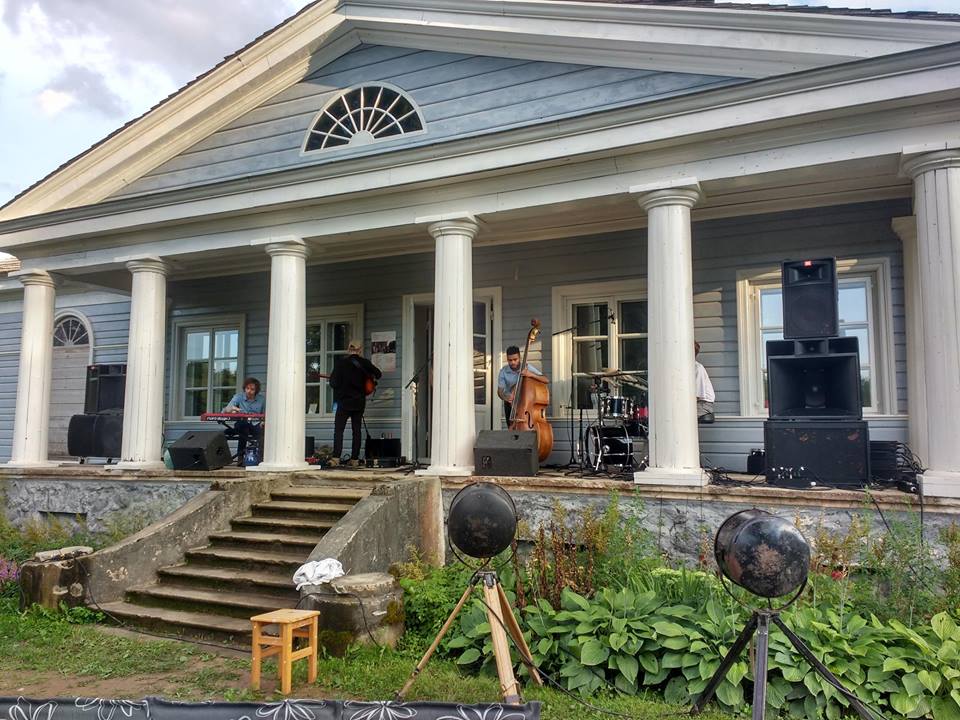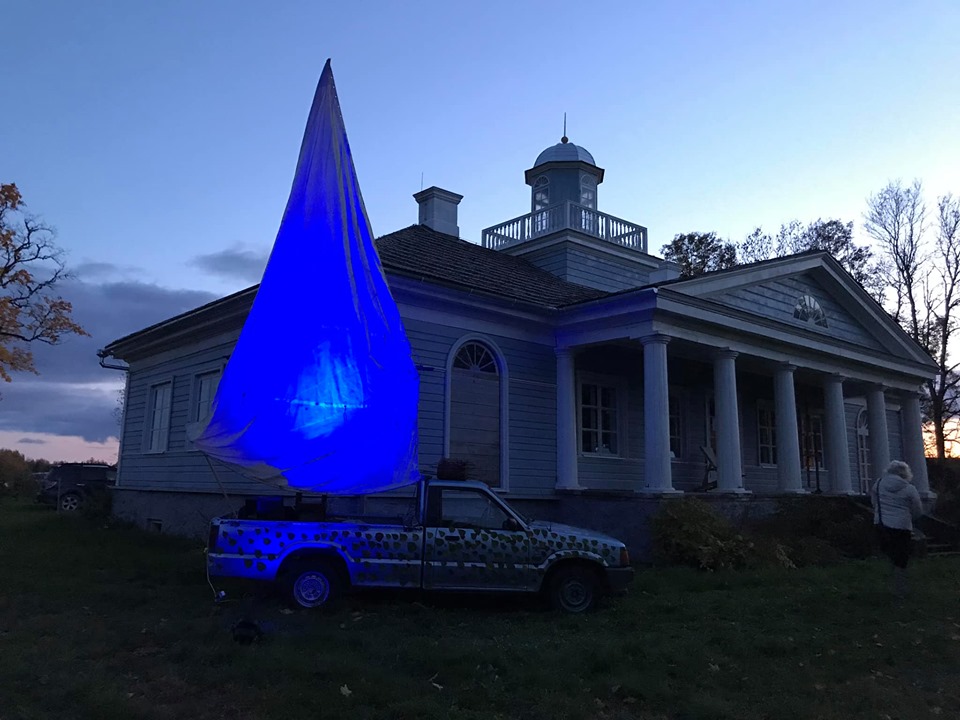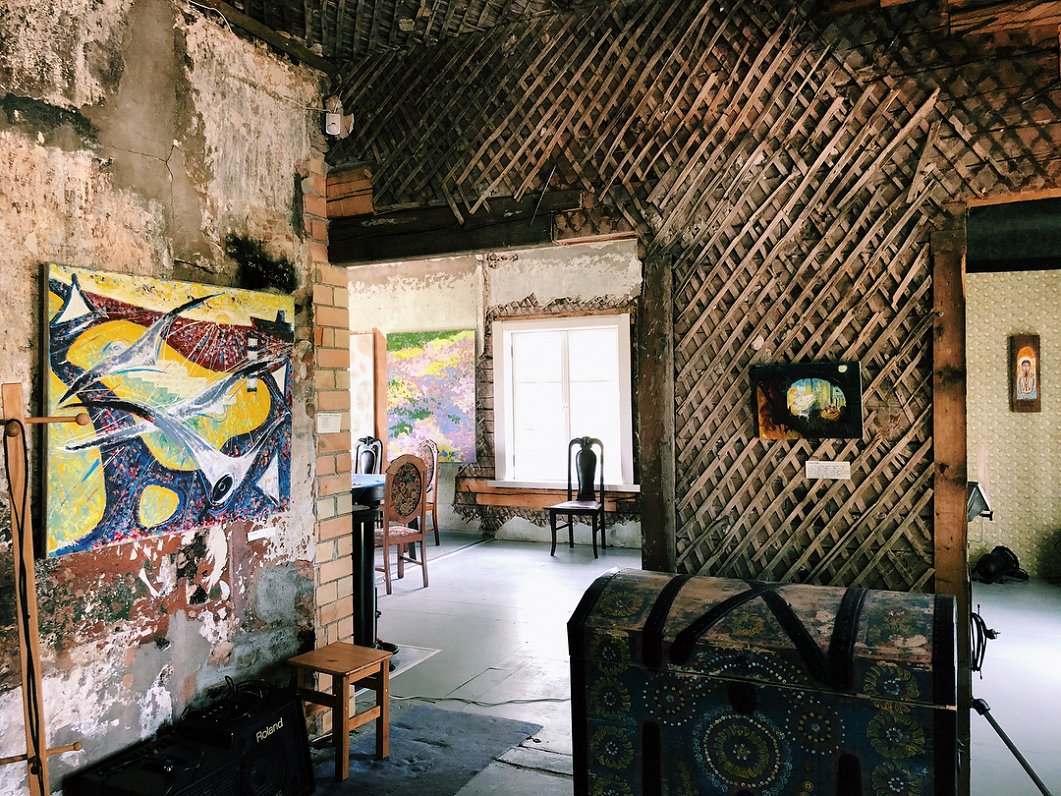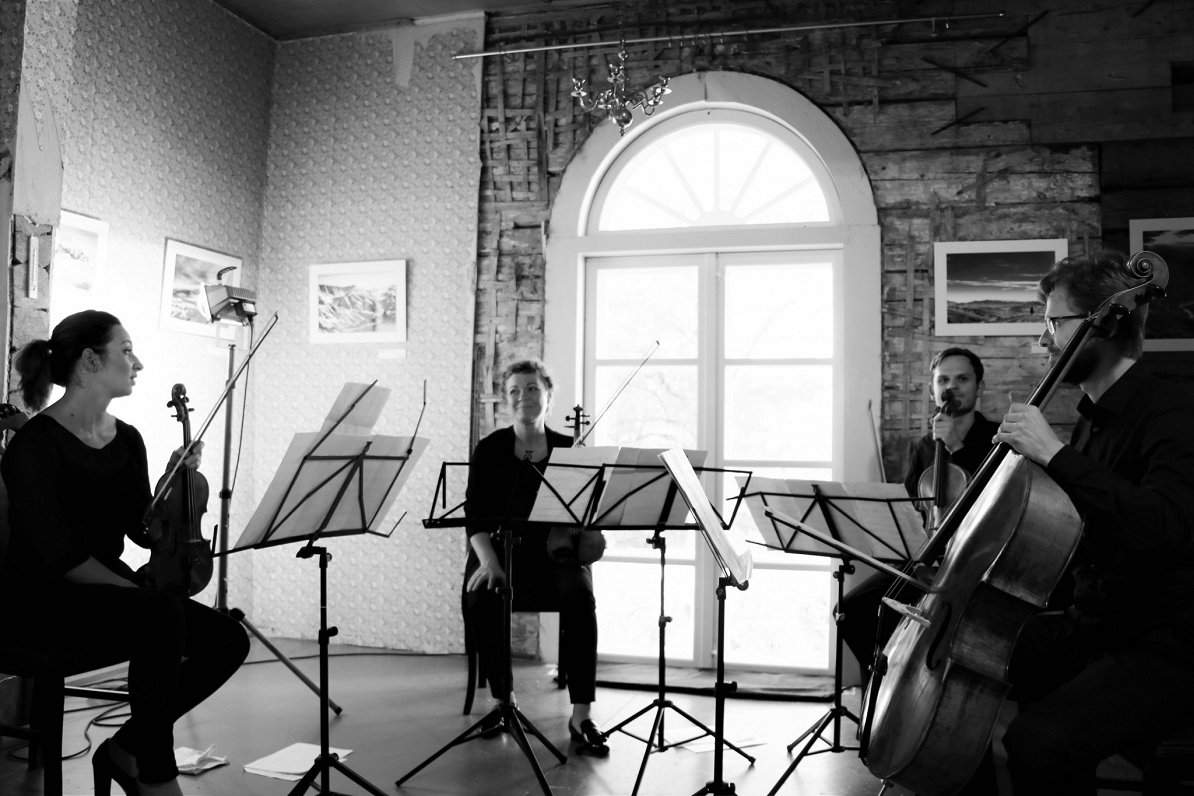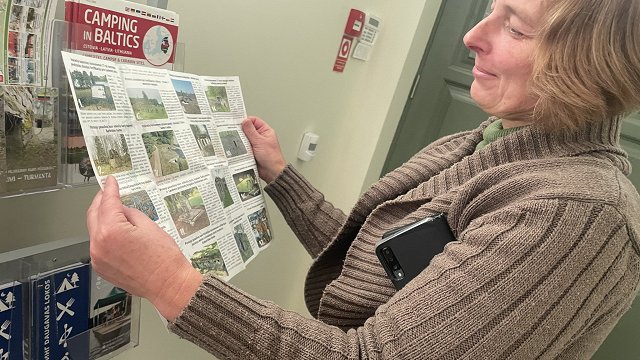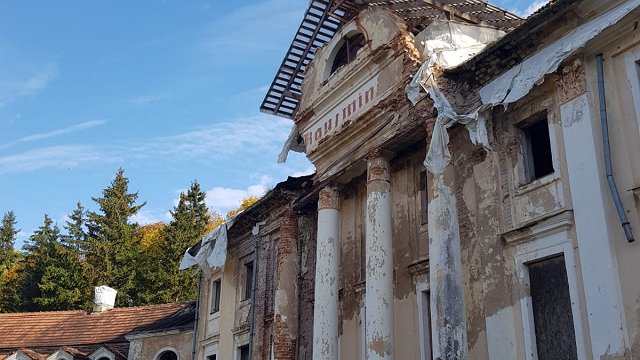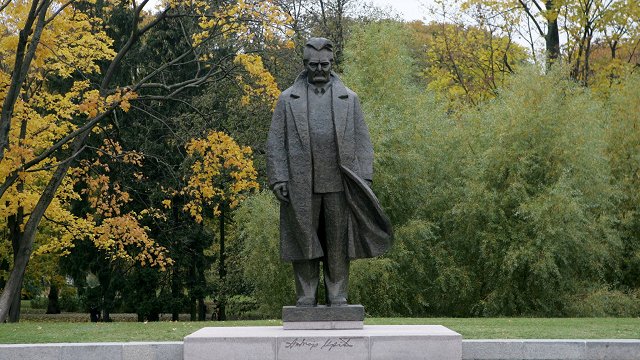Architectural Culture Stories
From September 24 to 27, the European Heritage Days will take place in Latvia, the subject of which is architectural culture this year. The National Heritage Board has compiled more than 30 examples with valuable history, construction, restoration. On LSM, we present the stories of these sites, as told by Latvian architectural and cultural heritage experts.
The owner, Uģis Prauliņš, is a musician - and the building sings, too. It sings in the autumn wind, in restoration work beat, in haunting old-house silence. Everything at a slow pace. The steady-metered story of Ērmaņi Manor is told by expert architect Jānis Zilgalvis.
In 2006, the Prauliņi family restored its ownership of the estate, after the building had suffered in both world wars and the following Soviet occupation. Surprisingly, this monument of wooden architecture, built in the 1820s, had survived until modern day preserving a lot of historical evidence.
The rather small building is designed in Classicism style, its main entrance features a beautiful column portico with balanced proportions, and a triangle-shaped fronton, above the ridge in the center of the building rises a tower with a viewing platform and a dome-shaped roof.
Over time, the layout of the master’s house had changed multiple times, because every new owner tried to introduce certain improvements suited to personal preferences. To identify all such modifications and the underlying original solution, architectural research was undertaken by architects Dita Lapiņa, Ināra Cine, and traditional building expert Juris Zviedrāns.
After the research, architect Kristīne Veinberga elaborated the reconstruction design. The work began with securing and fixing the load bearing constructions — roof beams and roof components. Afterwards, the team renovated the tower that had been lost over the years, as well as the windows, which were manufactured according to historical examples. Only natural paint was used in the renovation work, and all authentic details and components were preserved, even the forged nails! Every tiniest detail was paid proper attention respecting the time of construction and the style of the building.
The interior gives the impression of chaos and incompleteness — the wall logs are exposed, in places the old plastering is still visible surrounded by the laths that were used for binding. Yet, all these elements are genuine, undisguised and unpolished — just the opposite of what is being done in many other manor houses. The Prauliņi family and their guests enjoy this incompleteness, which reveals the old building better than a completed, polished version ever would.
The interior restoration goes on at its own slow pace, and every moment in this long process gives new insights, impressions and emotional experience. Such environment too can attract people — in summertime, the Manor has a busy schedule of cultural events. These include concerts, exhibitions, poetry nights, creative brainstorming events etc.
The Manor’s surroundings, however, have not survived. Those changed already during the agrarian reform of Latvia, when each building of the complex acquired a new owner. Only a few heritage trees have remained from the original landscape, while the nearby river has become shallower. However, the surroundings gradually acquire new plants and walks, based on advice from professional landscape architects.
Publication developed in cooperation with the National Heritage Board.
Find out the history of other locations in similar stories:
